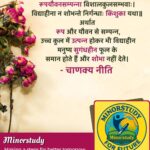Introduction: What is Kathasaritsagar?
“Kathasaritsagar,” meaning Ocean of the Streams of Stories, is one of the largest collections of ancient Indian legends, fairy tales, and folk tales. Compiled by Somadeva in the 11th century CE, it is a massive Sanskrit text that interweaves mythology, adventure, and wisdom across generations. Unlike religious scriptures or political treatises, Kathasaritsagar is a celebration of storytelling as a human necessity, combining entertainment, morality, and cultural continuity.
- Introduction: What is Kathasaritsagar?
- History of Kathasaritsagar
- Timeline Snapshot
- Fascinating Facts About Kathasaritsagar
- Key Themes & Teachings
- Significance in Daily Life
- Observance & Cultural Influence
- Wishing with Wisdom: Quotes from the Text
- FAQs
- Societal Importance
- Conclusion: The Everlasting Ocean of Stories
History of Kathasaritsagar
- Author: Somadeva, a Kashmiri Shaivite Brahmin and poet.
- Time of Composition: Circa 1070 CE, during the reign of King Anantadeva of Kashmir.
- Purpose: Created as a source of joy and mental peace for Queen Suryamati, who was distressed by political instability.
- Source Material: Based on the now-lost Brihatkatha written by Gunadhya in the Paishachi language.
Kathasaritsagar was written in Sanskrit and comprises 18 books and 124 chapters, filled with nested stories—stories within stories—that mirror Indian oral storytelling traditions.
Timeline Snapshot
| Year/Period | Event |
|---|---|
| Unknown (Pre-Common Era) | Gunadhya writes Brihatkatha in Paishachi |
| ~1070 CE | Somadeva compiles Kathasaritsagar in Sanskrit |
| 18th–19th century | European scholars begin studying and translating the text |
| Modern Era | Influences Indian storytelling, cinema, folklore studies |
Fascinating Facts About Kathasaritsagar
- One of the longest narrative texts in Indian literature.
- Features over 350 stories, many of which later inspired Panchatantra, Jataka tales, and Arabian Nights.
- Serves as a cultural encyclopedia, touching themes like magic, karma, dharma, gender roles, and kingship.
- Rich use of humor, irony, satire, and symbolism.
- Influenced narrative techniques in Sanskrit drama and poetry.
- Preserves many folk beliefs, ritual practices, and regional customs.
- Demonstrates early forms of feminist thinking through strong female characters.
Key Themes & Teachings
- Morality and Dharma: Actions have consequences, whether good or bad.
- Fate and Free Will: While fate plays a role, cleverness and effort are often rewarded.
- Deception and Wisdom: Tricksters and wise characters often cross paths.
- Love and Sacrifice: Romantic subplots reveal deep cultural values.
- Storytelling as Wisdom: Stories are not merely tales but containers of truth.
Significance in Daily Life
Kathasaritsagar is more than just ancient entertainment. Its stories mirror our modern lives:
- Resilience through hardship
- The importance of clever thinking
- Understanding ethical complexity
- Celebrating diversity in human behavior
Many educators, psychologists, and even corporate trainers use its stories to teach:
- Leadership
- Conflict resolution
- Emotional intelligence
Observance & Cultural Influence
While there’s no specific festival for Kathasaritsagar, its influence is felt across:
- Indian cinema
- Classical and modern literature
- Children’s stories
- Folklore theater
It is commonly read or referenced during:
- Literature courses
- Cultural preservation festivals
- Storytelling workshops
Wishing with Wisdom: Quotes from the Text
You can wish someone with Kathasaritsagar-style blessings:
“May your journey be as rich as Naravahanadatta’s, full of wisdom, wit, and worthy victories.”
FAQs
Q1. Is Kathasaritsagar a religious text? A: No, it is secular in nature, though it contains spiritual and mythological elements.
Q2. Is it still read today? A: Yes, scholars and storytellers actively engage with its content.
Q3. What language was it originally written in? A: Sanskrit, based on an earlier Paishachi work.
Q4. Who was Naravahanadatta? A: The main hero of the text, destined to become the emperor of the Vidyadharas (celestial beings).
Q5. Where can I read it? A: Translations are available online and in university libraries.
Societal Importance
Kathasaritsagar preserves India’s pluralism, offering:
- Gendered perspectives
- Philosophical debates
- Cross-cultural storytelling
It teaches us to respect differences, question norms, and celebrate narrative as resistance and reflection.
Conclusion: The Everlasting Ocean of Stories
The Kathasaritsagar isn’t just a treasure trove of stories—it’s India’s narrative soul. In every twist, turn, and tale, we find parts of ourselves: our fears, dreams, ambitions, and humor.
Its stories still breathe through every grandmother’s tale, every village fair, every dramatic TV serial. In reading it, we don’t just learn about ancient India—we understand eternal humanity.
So dive into this ocean—not to escape life, but to understand it better.








